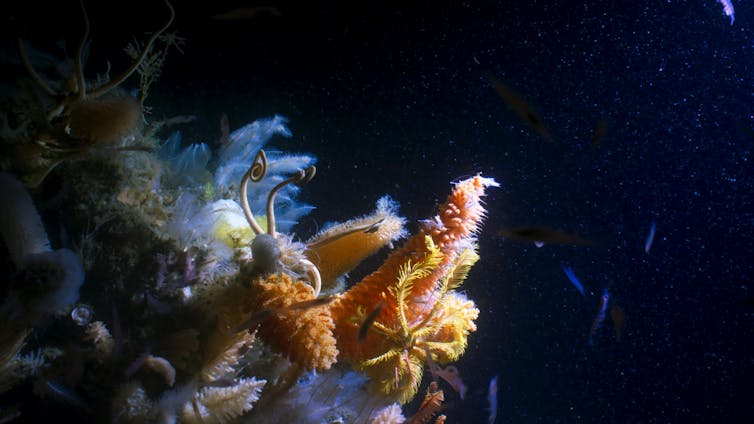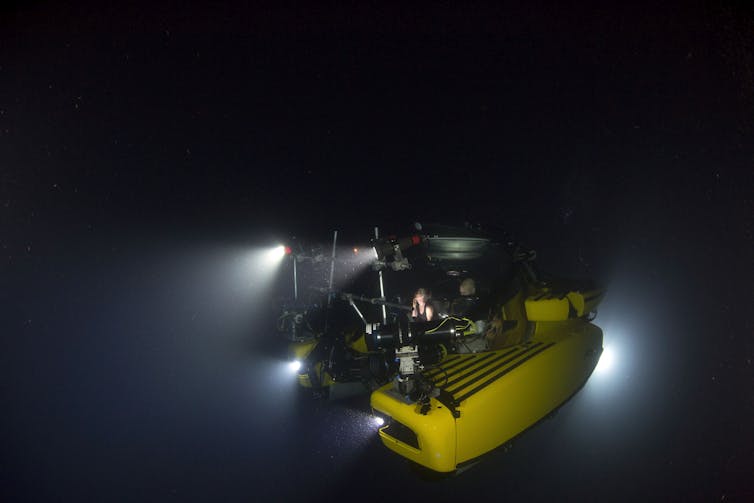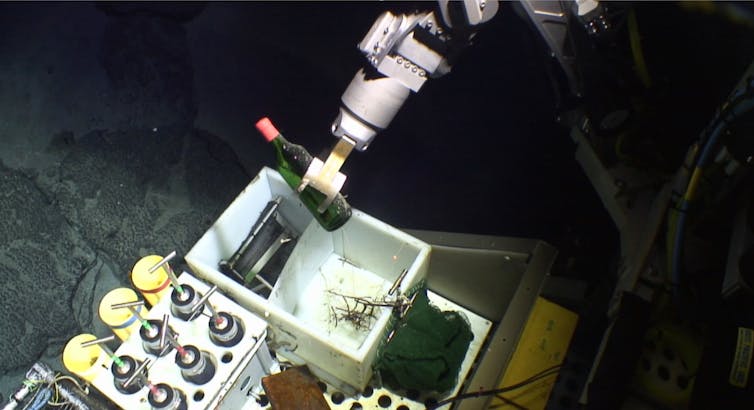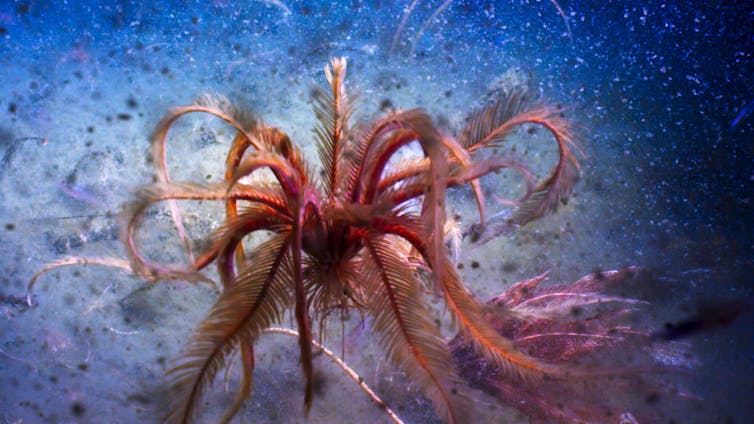
If we have to feed 9.8 billion people by 2050, food from the ocean will have to play a major role. Ending hunger and malnutrition while meeting the demand for more meat and fish as the world grows richer will require 60% more food by the middle of the century.But around 90% of the world’s fish stocks are already seriously depleted. Pollution and increasing levels of carbon dioxide (CO₂) in the atmosphere, which is making the oceans warmer and more acidic, are also a significant threat to marine life.There is potential to increase ocean food production but, under these conditions, eating more of the species at the top of the food chain, such as tuna and salmon, is just not sustainable. As a recent EU report highlighted, we should instead be looking at how we can harvest more smaller fish and shellfish, but also species that aren’t as widely eaten such as seaweed and other algae.The oceans have absorbed around one third of the CO₂ emitted into the atmosphere since the Industrial Revolution. The absorbed CO₂ goes through a series of chemical reactions that form carbonic acid and lower the pH of the water. These reactions also reduce the concentration of carbonate ions, which are vital for those creatures that grow external skeletons such as corals and shellfish.
The acid and the lack of carbonate mean these organisms form weaker skeletons and have to use more energy to do so, leaving less energy for growth and reproduction. Consequently, they up smaller in size. Aside from the impact this has on shellfish, several of the species affected, such as corals in the tropics or coralline algae in the waters around the UK, also play a key role in providing food and nursing grounds for fish. And less fish food leads to fewer fish for us to catch.
Climate change is affecting food production
The impact of ocean acidification varies widely across the globe. But it is already affecting marine food production, particularly of shellfish. For example, CO₂-rich water along the west coast of the US means more oysters in local hatcheries are dying when they are still larvae.
Warmer seas due to climate change are also affecting food supplies. Some species are moving towards the poles in search of cooler water, forcing fishermen into more northerly waters or leaving them without stocks altogether. Some fishing fleets in northern locations will find more fish available but many will see the amount of fish available to catch fall by between 6% and 30% depending on the region. The biggest impact will be on areas that are already the most dependent on fishing, such as Southeast Asia and West Africa.
One possible solution is to eat more smaller fish and shellfish such as mussels. Large fish need to eat smaller fish to grow. If we eat smaller fish instead then we remove a step from the food chain and reduce the amount of energy lost in the process. What’s more, it might become easier to farm these smaller fish because the algae, cyanobacteria and other plankton they eat could actually benefit from warmer waters and higher levels of CO₂ in the atmosphere. This is because they get their energy from photosynthesis and so use CO₂ like fuel.

Shutterstock
It might also be possible to take this a step further and add some of these organisms directly to our diet, giving us an abundant new source of food. Seaweed, for example, is a type of algae that has been eaten for centuries, but only 35 countries commercially harvest it today. Spirulina cyanobacteria is already eaten as a food supplement and several companies are trying to turn other forms of algae into a human food source.
Farming these organisms in the right way could even help counter some of the effects of climate change on the rest of the food chain. For example, growing more seaweed lowers the amount of CO2 in the surrounding water, reduces acidification, and improves the environment for oysters and other shellfish. Managing seaweed harvest correctly will also maintain the dissolved oxygen and nutrient levels in the water, contributing to the overall health of the ocean.
![]() Making algae a common part of more people’s diets won’t be easy. We need to ensure that any new algae food products on our dinner plates have the needed nutritional value but are also attractive and safe to eat. But sticking with our traditional salmon and tuna diet isn’t sustainable. Expanding our seafood menus could be a vital way of keeping the ocean healthy while it supplies the food we need.
Making algae a common part of more people’s diets won’t be easy. We need to ensure that any new algae food products on our dinner plates have the needed nutritional value but are also attractive and safe to eat. But sticking with our traditional salmon and tuna diet isn’t sustainable. Expanding our seafood menus could be a vital way of keeping the ocean healthy while it supplies the food we need.
Pallavi Anand, Lecturer in Ocean Biogeochemistry, The Open University and Daniela Schmidt, Professor in Palaebiology, University of Bristol
This article was originally published on The Conversation. Read the original article.






